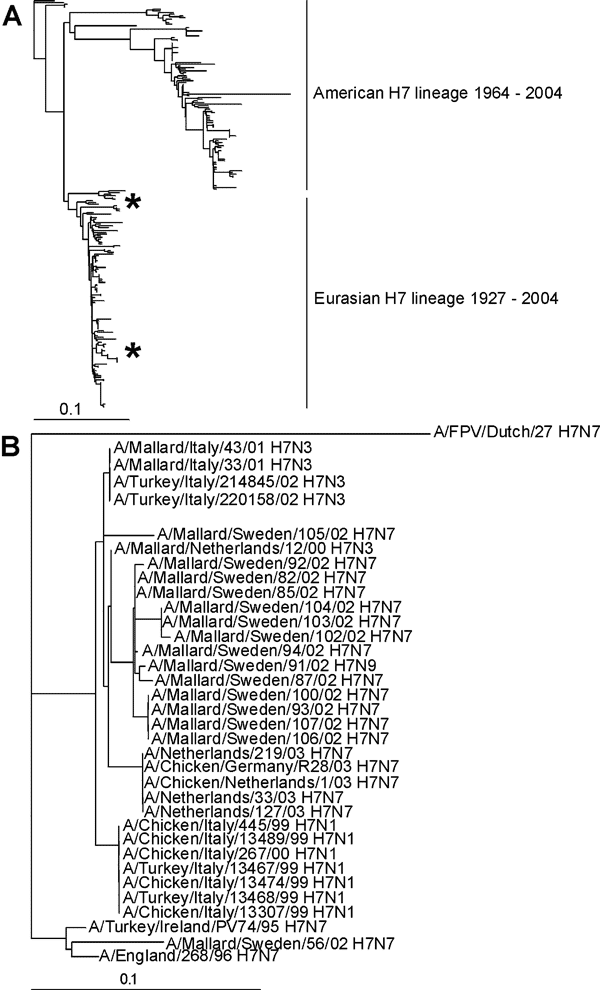Volume 11, Number 10—October 2005
Research
Mallards and Highly Pathogenic Avian Influenza Ancestral Viruses, Northern Europe
Figure 2

Figure 2. Phylogenetic trees of hemagglutinin H7 sequences. A) Phylogenetic tree based on the amino acid sequence distance matrix for the HA1 open reading frames of all H7 sequences available from public databases. The scale bar represents ≈10% of amino acid changes between close relatives. *Represents the locations of the Mallard influenza A virus isolates. B) DNA maximum likelihood tree for the European highly pathogenic avian influenza viruses and the low pathogenic avian influenza H7 influenza A viruses isolated from migrating Mallards by using A/FPV/Dutch/27 as outgroup. The scale bar represents 10% of nucleotide changes between close relatives.
Page created: February 22, 2012
Page updated: February 22, 2012
Page reviewed: February 22, 2012
The conclusions, findings, and opinions expressed by authors contributing to this journal do not necessarily reflect the official position of the U.S. Department of Health and Human Services, the Public Health Service, the Centers for Disease Control and Prevention, or the authors' affiliated institutions. Use of trade names is for identification only and does not imply endorsement by any of the groups named above.